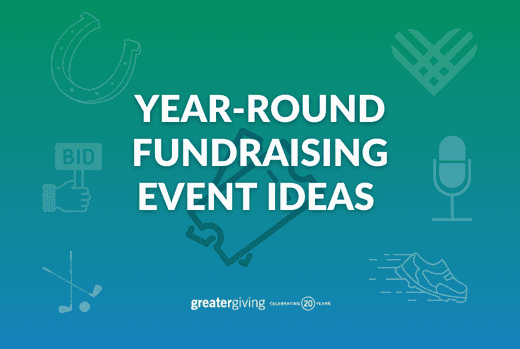Nonprofit Agency: Professional Services to Assistance Your Mission and Goals
Nonprofit Agency: Professional Services to Assistance Your Mission and Goals
Blog Article
The Role of Community Interaction in Nonprofit Fundraising: Building Lasting Relationships for Lasting Assistance
Neighborhood interaction is progressively recognized as a critical component of successful nonprofit fundraising. The techniques and methods employed to involve communities vary commonly, raising crucial concerns about efficiency and effect.
Comprehending Neighborhood Interaction
Community involvement is a vital part of effective nonprofit fundraising initiatives. It describes the methods and activities that organizations employ to get in touch with their neighborhood neighborhoods, cultivating partnerships that are equally advantageous. Comprehending neighborhood interaction entails recognizing its diverse nature, which includes engagement, partnership, and outreach. Nonprofits have to determine essential stakeholders-- such as neighborhood participants, regional services, and various other organizations-- to produce reliable interaction approaches.
Effective community interaction is predicated on energetic listening and responsiveness to the requirements and interests of the neighborhood. This procedure includes getting feedback, recognizing neighborhood characteristics, and guaranteeing that the company's mission lines up with neighborhood top priorities. Engaging the community can take different kinds, consisting of public conferences, volunteer chances, and collaboration efforts, each developed to encourage involvement and financial investment in the company's objectives.
In addition, area interaction need to be approached as an ongoing dialogue instead of an one-time initiative. By cultivating an inclusive environment where community voices are heard and valued, nonprofits can construct a solid foundation for future fundraising undertakings. Inevitably, a deep understanding of area involvement encourages organizations to develop genuine connections that enhance their overall efficiency and sustainability.
Benefits of Solid Relationships
Solid connections formed through community involvement return countless advantages for not-for-profit fundraising efforts. Most importantly, these relationships foster count on and credibility, vital elements in encouraging benefactors to contribute. When potential supporters see a not-for-profit actively included in their neighborhood, they are most likely to rely on its mission and impact.

In addition, these relationships promote effective interaction. Nonprofits can take advantage of their links to share tales of influence, updates, and needs, making sure that supporters continue to be educated and engaged. This open line of interaction not just reinforces bonds yet likewise encourages referral promotion, expanding the nonprofit's reach.
Lastly, solid community ties can draw in brand-new partners and enrollers. Organizations and people are more inclined to line up with companies that demonstrate significant community involvement, offering extra sources and assistance that can considerably boost fundraising capabilities. Thus, growing durable partnerships via area engagement is important to a nonprofit's lasting fundraising success.
Strategies for Reliable Interaction
How can nonprofits successfully engage their neighborhoods to enhance fundraising initiatives? Establishing targeted approaches is crucial for cultivating significant connections. Initially, leveraging social media platforms allows organizations to share their objective dynamically and interactively, getting to a broader target market. Regular updates, engaging web content, and calls-to-action can galvanize neighborhood rate of interest and participation.
Second, hosting community occasions, such as workshops, volunteer opportunities, or fundraising drives, facilitates in person communication, permitting nonprofits to showcase their effect and initiatives. These events not only raise funds yet likewise grow relationships and permit area participants to involve directly with the cause.
Third, applying personalized interaction techniques can enhance interaction. Tailoring messages to certain contributor sectors based upon rate of interests and past payments promotes a feeling of belonging and financial investment in the company's objective.
Finally, creating collaborations with neighborhood services and neighborhood leaders can magnify outreach initiatives. Collaborative campaigns can boost presence and trustworthiness, demonstrating a collective dedication to the neighborhood's health. By integrating these techniques, nonprofits can construct enduring relationships that improve fundraising initiatives and drive lasting assistance.
Gauging Engagement Success
While involving the community is essential for successful not-for-profit fundraising, determining the effectiveness of these interaction efforts is equally important. Establishing clear metrics allows companies to analyze exactly how well they are getting in touch with their audience and accomplishing their fundraising objectives. Key performance indications (KPIs) such as benefactor retention rates, volunteer participation levels, and interaction on social networks systems supply substantial information for evaluation.

Routinely assessing these metrics enables organizations to pivot their strategies when essential, making sure that neighborhood involvement stays straightened with their total objective. Moreover, sharing these results with stakeholders cultivates transparency and builds count on, motivating additional community involvement. Eventually, a durable measurement framework not just notifies future fundraising efforts however likewise strengthens the connection between the nonprofit and its supporters, preparing for sustainable success.
Study in Neighborhood Effect
Many study illustrate the profound influence that neighborhood interaction can have on nonprofit fundraising success. One significant instance is the "Food for Idea" initiative, where a regional food bank partnered with services and institutions to host community suppers. These occasions not just raised funds however likewise promoted a feeling of belonging among participants, significantly boosting contributor retention rates.
One more compelling case is the "Eco-friendly Spaces Task," which involved local residents in the revitalization of city parks. This effort not just amassed financial support from local businesses but likewise cultivated a volunteer base that added to continuous upkeep and programming. The feeling of ownership and satisfaction amongst area participants translated into continual payments.
In the realm of arts, the "Art for All" campaign efficiently engaged neighborhood musicians and patrons to create joint art setups, leading to boosted exposure and contributions for a regional arts nonprofit.
These instances highlight that when nonprofits prioritize neighborhood participation, they can create lasting partnerships that enhance fundraising efforts, ensuring lasting support and promoting a vivid neighborhood culture. Such instances demonstrate that neighborhood involvement is not merely a technique but a necessary column of nonprofit success.
Verdict
In verdict, neighborhood involvement is indispensable to the success of nonprofit fundraising initiatives. By cultivating strong connections with local stakeholders, organizations improve count on and reputation, bring about boosted benefactor retention and commitment. Carrying out efficient involvement approaches and measuring their effect makes sure that nonprofits can grow and adjust. Inevitably, a durable foundation of community support not only intensifies fundraising prospective however also grows a culture of nonprofit agency partnership, crucial for achieving long-term business objectives and sustaining purposeful impact.
Nonprofits should identify essential stakeholders-- such as neighborhood members, local organizations, and various other companies-- to develop reliable engagement approaches.

In conclusion, community involvement is essential to the success of nonprofit fundraising initiatives.
Report this page